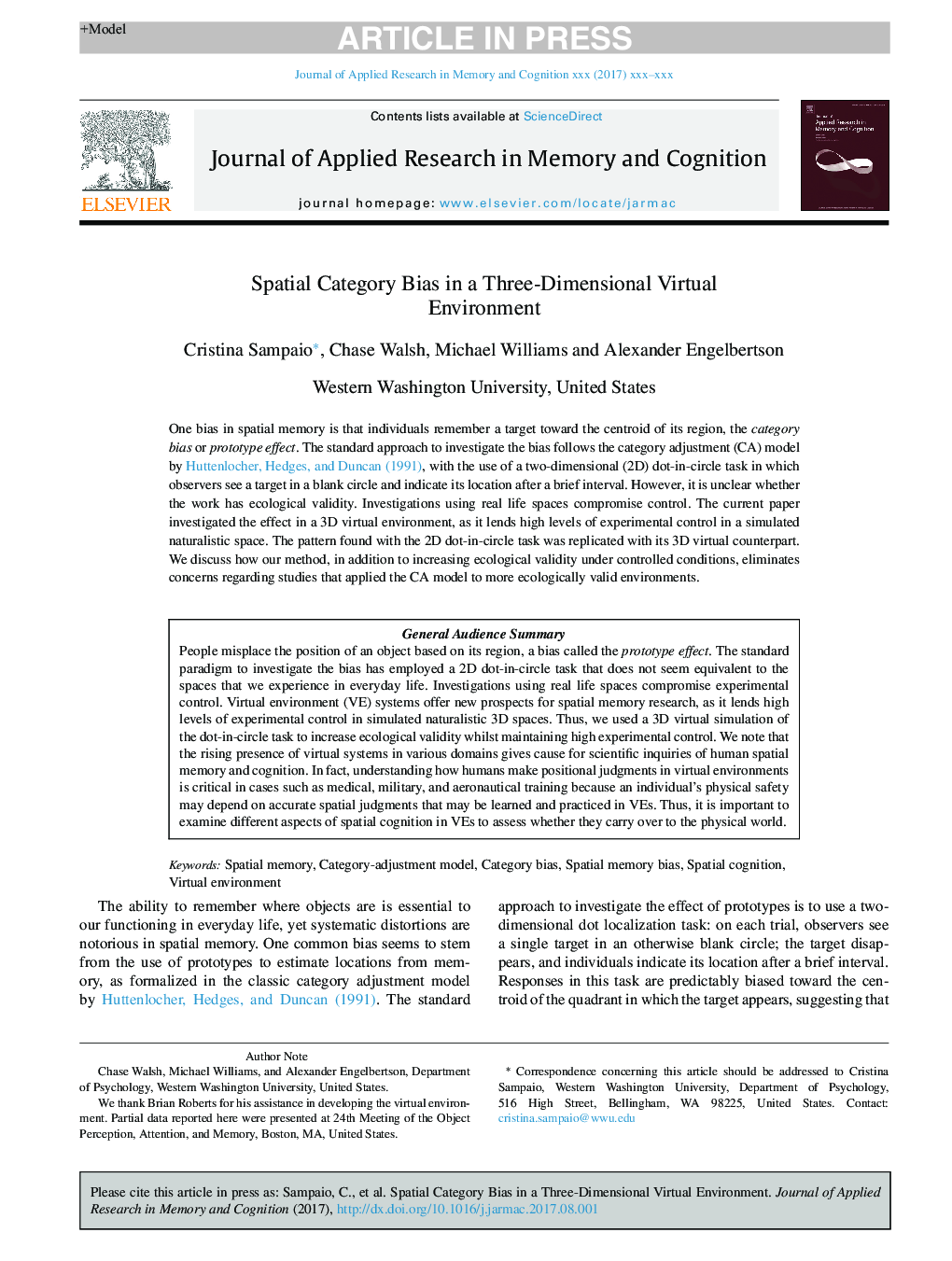| Article ID | Journal | Published Year | Pages | File Type |
|---|---|---|---|---|
| 7241831 | Journal of Applied Research in Memory and Cognition | 2017 | 7 Pages |
Abstract
One bias in spatial memory is that individuals remember a target toward the centroid of its region, the category bias or prototype effect. The standard approach to investigate the bias follows the category adjustment (CA) model by Huttenlocher, Hedges, and Duncan (1991), with the use of a two-dimensional (2D) dot-in-circle task in which observers see a target in a blank circle and indicate its location after a brief interval. However, it is unclear whether the work has ecological validity. Investigations using real life spaces compromise control. The current paper investigated the effect in a 3D virtual environment, as it lends high levels of experimental control in a simulated naturalistic space. The pattern found with the 2D dot-in-circle task was replicated with its 3D virtual counterpart. We discuss how our method, in addition to increasing ecological validity under controlled conditions, eliminates concerns regarding studies that applied the CA model to more ecologically valid environments.
Related Topics
Social Sciences and Humanities
Psychology
Applied Psychology
Authors
Cristina Sampaio, Chase Walsh, Michael Williams, Alexander Engelbertson,
